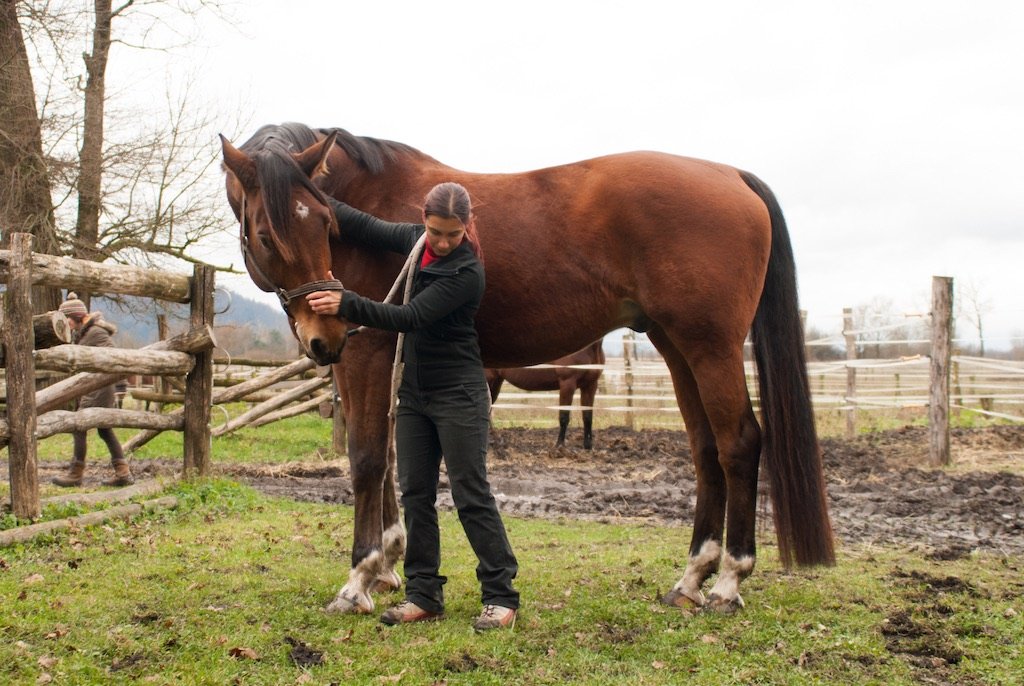What's the deal with different bodywork modalities?
Different modalities might have different approaches, but their goal is the same: restoring function.
I love the term bodywork, because it can mean so many different things. In general, I like to think of bodywork as an umbrella expression covering any sort of manual therapy – massage, osteopathy, chiropractic, acupuncture, structural integration, anything where the therapist uses his hands to help restore function. There are so many modalities out there, it can be hard for owners to decide which one will work better for their horse in their specific situation. Some people firmly believe that osteopathy is the way to go, others see better results with myofascial release, and others swear by acupuncture. And none of them are wrong.
When choosing which modality is best for our horse, there are three things to keep in mind.
Number one, all of them have the same goal. All of the different bodywork modalities out there aim to restore the function of the horse's body, they just do it in different ways. And while it might seem that osteopathy and acupuncture are more holistic, since they consider the horse's viscera as well as his musculo-skeletal system, in reality, no modality works on one system alone. The muscles, the fascia, the nerves and the organs are all so connected that as soon as you are working on one of them, you are working on all of them. So, while a dry needling practitioner might seem to be focused on muscles only, the reach of his work will be much wider than that.
Everything is connected, so when working on one system we are always influencing the others.
Number two, it's not the modality, it's the therapist. We have all heard horror stories of chiropracts adjustments gone wrong, of therapists using medieval-torture-devices-like tools on horses and the like, it doesn't mean that all chiropractors are evil. A good therapist will be good, regardless of which modality he prefers. And it's not the techniques that make a good therapist, it's the deep understanding of how the body should function, knowing how to restore that functionality and most of all, the respect he has for the horse he's working with. A good therapist never stops learning and most likely has more than one tool in his toolbox of techniques. Most of us use a combination of different modalities in our work, because each horse might need something different in his specific situation.
Most therapists will use a combination of different modalities and techniques.
Number three, listen to your horse. At the end of the day, it's your horse that will tell you which modality is best for him. While some might enjoy a more vigorous trigger point therapy, others do better with something gentle, like the Masterson method. Some horses might be terrified of needles, while others prefer needles to being touched. Horses are generally very cooperative when it comes to bodywork, as long as the therapist acknowledges that they have a say in what the session is going to look like. The way the horse feels during and after a session is the most important thing to look out for when picking a bodyworker. If everyone in your stable swears by osteopathy, but your horse doesn't want anything to with it, listen to him, not to your fellow stable mates. It might work great for their horses, but your horse might need something different. Number three, listen to your horse. At the end of the day, it's your horse that will tell you which modality is best for him. While some might enjoy a more vigorous trigger point therapy, others do better with something gentle, like the Masterson method. Some horses might be terrified of needles, while others prefer needles to being touched. Horses are generally very cooperative when it comes to bodywork, as long as the therapist acknowledges that they have a say in what the session is going to look like. The way the horse feels during and after a session is the most important thing to look out for when picking a bodyworker. If everyone in your stable swears by osteopathy, but your horse doesn't want anything to with it, listen to him, not to your fellow stable mates. It might work great for their horses, but your horse might need something different.


